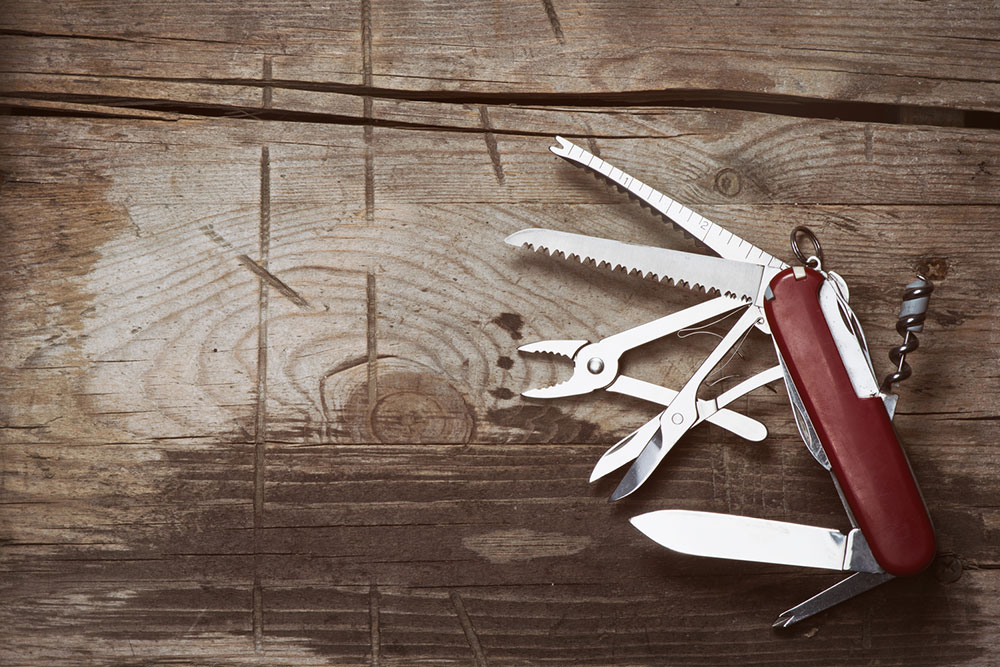17 surprising things not allowed on a cruise ship

Cruising the high seas is a sought-after attraction for many travelers, offering the perfect blend of relaxation and adventure. While cruise ships are known for their luxurious amenities and all-inclusive packages, passengers must abide by certain rules and regulations to ensure a safe and enjoyable journey. These restrictions extend to carrying certain items on the ship. While some might seem obvious, there are several items that one may not know are forbidden on ships.
1. Irons and steamers
Wrinkled clothes might be a pet peeve for many, but cruise ships don’t allow irons or steamers in cabins. This is mainly to avoid any items that can lead to fire hazards. One can instead carry wrinkle-release products for a quick fix. Many ships also offer laundry services to keep one’s attire wrinkle-free, but it’s best to check beforehand with the cruise ship about this particular service.
2. Household appliances
Like clothing irons and steamers, coffee makers, kettles, toasters, hot plates, and other household appliances that generate heat are considered to pose a fire risk and are not allowed aboard. That said, a hair dryer, curling iron, straightener, or portable electric fan are some things that are allowed.
3. Electric blankets
Electric blankets may be confiscated during embarkation since they could compromise safety protocols, and cruise lines maintain strict fire prevention measures to protect passengers and crew.
4. Power strips or surge-protected power bars
Surge-protected power bars are electric devices that safeguard one’s electronics from voltage spikes and surges. These power bars feature built-in surge protection technology that controls potential electrical damage. However, these devices are not allowed on cruise ships because they may overload the ship’s electrical circuits or interfere with power distribution, posing a fire risk. The ones carried to the ship are usually either approved by the authorities or are non-surge-protected power bars.
5. Drones
Drones may seem like the perfect gadget to capture breathtaking moments during a cruise, but they are typically not allowed on cruise ships due to a combination of safety, privacy, and security concerns. The confined space of a cruise ship makes flying a drone both dangerous and disruptive. Additionally, drones can intrude upon the privacy of fellow travelers, and the sight of an unknown flying object can raise security alarms. Some cruises might allow restricted drone usage, but verifying their policy is crucial before embarking on one’s journey.
6. Homemade food
Perishable and homemade foods are usually not allowed on cruise ships due to food safety and hygiene concerns. That said, cruise lines do permit passengers to bring packaged snacks and candies.
7. Candles and incense
Since these items open flames and pose a significant fire risk on a cruise ship, candles and incense sticks are not allowed on cruise ships.
8. Hoverboards and segways
Since these items open flames and pose a significant fire risk on a cruise ship, candles, and incense sticks are not allowed on cruise ships.
9. Skateboards and wheeled shoes
Items like skateboards, rollerblades, wheeled shoes, and others are typically not allowed on board. These items can pose safety hazards in a cruise ship’s limited and often crowded spaces. Skateboards, in particular, can lead to accidents and injuries, while wheeled shoes may damage the ship’s flooring. Wheelchairs or other walking assistance devices, however, are not prohibited.
10. Certain toys
Any toys or items that can be launched off a ship, like kites, canoes, surfboards, and helium balloons, are not allowed on cruise ships since they may interfere with navigational equipment and pose safety hazards. Similarly, toy guns may be banned on ships since they may cause unnecessary concern or panic among fellow passengers.
11. Firecrackers
Firecrackers are strictly prohibited on cruise ships due to safety concerns. The confined environment of a ship, combined with the risk of sparks or debris, poses a significant fire hazard.
12. Baby monitors
Cruise ships rely on a complex network of signals for various essential functions, including navigation and emergency communication. Baby monitors can potentially disrupt these crucial systems, which could compromise the safety and overall operation of the vessel. So, they are usually banned on cruise ships. Baby strollers, however, are not prohibited on the ships.
13. Mug warmers and hot plates
Mug warmers and hot plates can pose a fire hazard if left unattended or malfunctioning. They can overheat, ignite flammable materials, or even cause electrical problems. Cruise lines typically prohibit using these items in cabins to mitigate these risks and maintain a safe onboard environment.
14. Fish
Fish caught during island excursions or fishing adventures are prohibited on cruise ships. Many cruise ship excursions, however, offer the convenient option of packing and sending freshly caught fish directly to passengers’ homes, allowing them to savor the flavors of their journey without violating the cruise ship’s policies.
15. Metal detectors
Metal detectors are typically not allowed on cruise ships because they can interfere with their electronic and navigational equipment.
16. Pool inflatables
Pool inflatables, such as large floating rafts, inner tubes, and pool noodles, can obstruct the already limited space in onboard pools and interfere with the comfort of other passengers. So, these items are usually prohibited on cruise ships. Having said that, as long as one does not breach any cruise rules, one may be allowed to carry inflatables to beaches or islands.
17. Fishing equipment
Casting a line off the ship’s side might be tempting, but fishing equipment is generally prohibited. Cruise ships have strict waste disposal protocols to protect the environment.
These restrictions are important to maintain onboard passengers’ safety and comfort. While some rules may seem inconvenient, they help maintain the overall experience of a cruise vacation. When preparing for a cruise, one must familiarize oneself with the specific policies of one’s chosen cruise line to avoid surprises. Some cruises may sometimes allow some of these items, so it’s best to consult one’s cruise ship if one is looking to bring specific items to the trip.



